Executive Summary
5G network slicing is an ideal choice to enable smart grid services. It divides the 5G network into logically isolated networks, where each one could be seen as a slice. 5G network slicing allows the power grid to flexibly customize specific slices with different network functions and different service level agreement (SLA) assurances according to the different requirements of the various services on a power grid.
The 5G SA-based power slicing innovation project, a collaboration between China Telecom, SGCC (State-Grid-Corporation-of-China) and Huawei, was initiated in September 2017 and has achieved major breakthroughs in verifying technology feasibility, exploring business feasibility, and fostering the ecosystem.
Through a rigorous commercial feasibility analysis of 5G power slicing, comparing it to private optical networks, the project concluded that power slicing can better support differentiated service scenarios, and will help power grid enterprises significantly reduce the total cost of ownership (TCO) of power communication networks, also resulting in a good return on investment ROI for carriers.
The 5G smart grid innovation project has been proven to be a valuable reference point for cooperation among global operators and enterprises in the 5G era.
1. The challenges faced by the power grid enterprises
A smart grid is a modernized power grid which uses information and communication technologies to collect information off the power grid. This information is used to adjust the production and distribution of electricity, or to adjust power consumption in order to save energy, reduce losses, and enhance the reliability of the power grid. In a normal power grid, devices are monitored manually onsite. With smart grids, these devices can be monitored and measured remotely, and can automatically determine, adjust, and control power usage. These are what make smart grids “smart”. Therefore, connecting these devices to the communications network is fundamental to smart grid construction.
A power grid consists of five phases: power generation, transmission, transformation, distribution, and consumption. Communication networks across power generation, transmission, and transformation are already mature with the optical network. However, in the distribution and power consumption phases, due to the massive number of nodes and scattered distribution, the coverage of the communications network is quite low. It is essentially the “last 5 km problem” and is the main bottleneck for smart grid development. According to the China National Energy Administration (NEA), 95% of blackouts occur in the last 5-kilometers of the power-grid.
To implement a smart grid, it is vital to build terminal access networks in the last 5 km of power distribution and consumption phases to allow for communication and control over these terminals. (NEA forecasted that in 2025, 9.63 million square kilometers will be covered with 20.13 million communication modules for the whole power industry of China).
To facilitate the pace of development, NEA proposed that by 2025, the terminal access network’s coverage in China should reach 90% of the total terminals to realize scenarios such as intelligent distributed feeder automation, power system differential protection, millisecond level precise load control, and information acquirement of low-voltage distribution. These scenarios have different network capability demands on latency, bandwidth, massive connection, and reliability.
Using optical-fiber to build terminal access networks is expensive and has difficulties in deployment due to the massive-connections and wide-coverage, while 5G can solve this problem effectively.
2. 5G network slicing to enable the smart grid
5G network slicing is an ideal choice to enable smart grid services. It divides the 5G network into logically isolated networks, where each one can be seen as a slice. 5G network slicing allows the power grid to flexibly customize specific slices with different network functions and different SLA (Service Level Agreement) assurances according to the needs, to meet different network requirements of various services mentioned above.
The innovation project proved that 5G network slicing can meet the terminal access network’s demand for wide coverage, low latency, high bandwidth, high reliability, high security, and differentiation of network capability, with lower cost and easier deployment than traditional fiber network.
2.1 Application scenarios of smart grid
The innovation project involved research on the network requirements of smart-grid’s scenarios, 4 typical scenarios were identified to be prospective for 5G Network Slicing.

Figure 1. Typical service scenarios of smart grids
2.1.1. Intelligent distributed feeder automation
The key requirements of intelligent distributed feeder automation for communications networks are as follows:
- Ultra-low latency: milliseconds
- High isolation: Distribution automation is a service in I/II production area of the power grid. It must be completely isolated from services in III/IV management areas
- High reliability: 99.999%
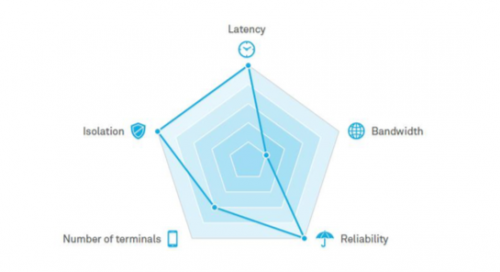
Figure 2. Key performance indicator (KPI) requirements of intelligent distributed feeder automation for communications networks
2.1.2. Millisecond-Level Precise Load Control
The key requirements of millisecond-level load control for communications networks are as follows:
- Ultra-low latency: milliseconds
- High isolation: Precise load control is a service in the I/II production area of the power grid. It must be completely isolated from services in III/IV management areas
- High reliability: 99.999%
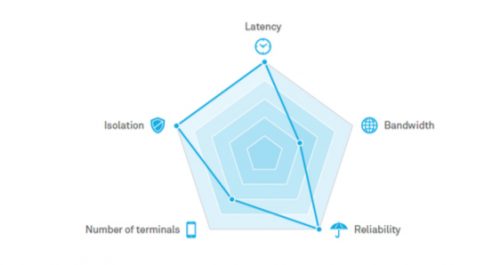
Figure 3. KPI requirements of millisecond-level load control for communications networks
2.1.3. Information Acquirement of Low Voltage Distribution Systems
The key requirements of information acquirement of low voltage distribution systems for communications networks are as follows:
- Massive access: tens of millions of terminals
- High frequency and high concurrency: second-level to quasi-real-time data reporting in the future
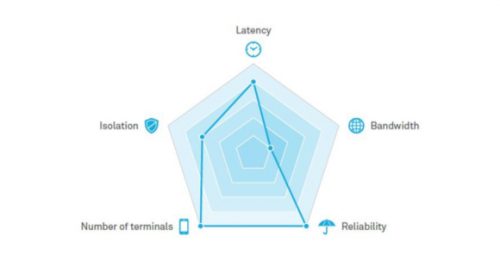
Figure 4. KPI requirements of information acquirement of low voltage distribution systems for communications networks
2.1.4. Distributed Power Supplies
The key requirements of distributed power supplies for communications networks are as follows:
- Massive access: millions to tens of millions of terminals
- Low latency: Distributed power supply management includes uplink data collection and downlink control. Downlink control flows require second-level latency
- High reliability: 99.999%
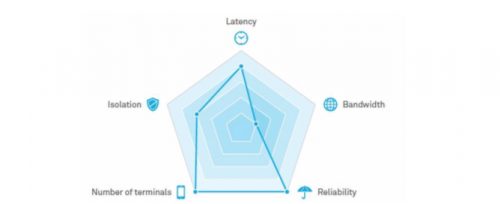
Figure 5. Figure 5: KPI requirements of distributed power supplies for communications networks
2.2. 5G Network Slicing can meet the needs of smart grid scenarios
5G network slicing has rich features. Generally, a network slice is a tenant-oriented virtual network, meets differentiated SLA requirements, and can be managed independently in terms of the life cycle. 5G network slicing is designed to handle specific service requirements, meets differentiated SLA requirements, and automatically builds isolated network instances on demand. 5G network slicing provides E2E (End-to-end) network assurance for SLAs, service isolation, on-demand network function customization, and automation.
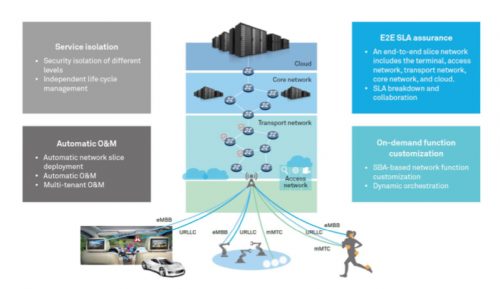
Figure 6. Key capabilities of 5G Network Slicing
2.2.1. Technical Perspective
5G network slicing can meet connection requirements of core industrial control services of power grids.
- 5G is a new-generation wireless communications technology. Its design considers the scenarios of not only human-to-human communication but also communications between things and humans and things. The ultra-low latency and massive access network capabilities can effectively meet the connection requirements of core industrial control services on the power grid
- Network slicing technology, which is first introduced by 5G networks, can achieve security and isolation at the same level as dedicated networks with significantly less construction costs compared with dedicated fiber networks built by enterprises
- The 5G edge computing technology enables distributed gateway deployment to implement local traffic processing and logical computing, which saves bandwidths and reduces latency. This further meets the ultra-low latency requirements of industrial control services on the power grid
2.2.2. Service Perspective
From the perspective of service characteristics, typical smart grid service scenarios discussed in this document are classified into two types:
- Industrial control services: Typical examples are intelligent distributed feeder automation and millisecond-level precise load control. Ultra-reliable and low-latency communication (URLLC) is a typical slice designed for this type of services
- Information collection services: Typical examples are information acquirement of low voltage distribution systems and distributed power supplies. Massive machine type communication (mMTC) is a typical slice designed for this type of services. In addition to the two typical slice types, the power grid industry may also require enhanced Mobile Broadband (eMBB) (typical service scenario: remote inspection using drones) and voice communications (typical service scenario: manual maintenance and inspection)
2.2.3. Deployment Perspective
From the perspective of service deployment, 5G not only enables new power grid industrial control services but also inherits the information collection services supported by the current 2G/3G/4G public networks. In this way, multiple slices of the power grid can be deployed, managed, and maintained in a unified manner, which helps customers of the power grid industry reduce costs effectively.
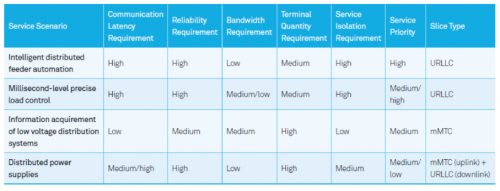
Table 1. 5G network slices meeting various requirements of different Smart Grid scenarios
2.3. Designing 5G network slicing solution for smart grid
2.3.1. Smart grid’s multi-slice architecture
Based on the application scenarios of smart grids and the architecture of 5G network slicing, the overall architecture of 5G smart grid design and management is as follows. The slices of information acquirement of low voltage distribution systems, intelligent distributed feeder automation, and millisecond-level precise load control are used to meet the technical specification requirements of different service scenarios. Domain-specific slice management and integrated end-to-end (E2E) slice management are used to meet service requirements in these scenarios.
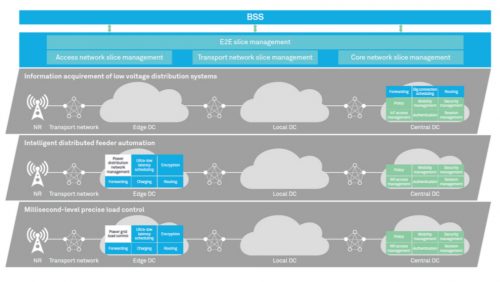
Figure 7. 5G Network slicing architecture of smart grids
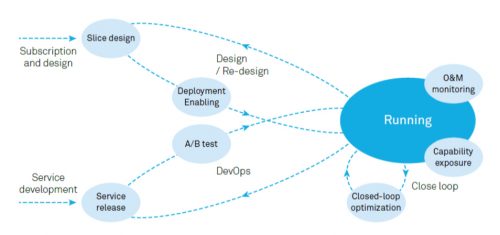
Figure 8. Life cycle management of 5G network slices
Slice Design on the Smart Grid
Slices can be customized to ensure agility and service uniqueness. Slice design includes template design and instantiation design. In the template design phase, the Communication Service Management Function (CSMF), Network Slice Management Function (NSMF), and Network Slice Subnet Management Function (NSSMF) collaborate in capability notification, breakdown, and matching, assemble an E2E slice template, and verify the template on the testbed to ensure that the template can provide the expected network capabilities. The slice instantiation design phase is triggered by specific order requirements. When a tenant needs to use a network slice, a preset slice template or a customized template can be used by the CSMF, NSMF, and NSSMF to confirm deployment information layer by layer, and instantiation deployment is performed to generate an available slice network.
Slice Deployment and Enabling on the Smart Grid
Smart grid slice deployment means deploying slicing network function (NF) instances on resources of the virtualized infrastructure layer. In the network functions virtualization (NFV) scenario, the MANO (Management and orchestration) is used to apply for virtual resources. Network slices may be deployed in a distributed mode. Therefore, network slices need to interact with the MANOs of multiple Data Centers. Enabling means that basic configurations can be performed after a slice is deployed to enable it to provide network services. Typical configurations include basic networking configuration, global parameters, and preset environment variables. The key objective of slicing deployment and enabling is automation, which reduces the CAPEX (capital expenditure), increases the speed of network opening, and enables tenants’ self-services and automatic network deployment.
Operation of Smart Grid Slices
The wireless side of the smart grid needs to select appropriate access and mobility management function (AMF) based on user attributes. The AMF needs to select a proper session management function (SMF) and user plane function (UPF) according to user service attributes.
These selection procedures are required regardless of whether an exclusive NF or a shared NF is used. The entire SBA (Service Based Architecture) is considered in slice selection. During the NF registration phase, slice information is imported to the network repository function (NRF), and policies are added to instruct the network slice selection function (NSSF) to select a slice.
Slice O&M Monitoring on the Smart Grid
Both operators and power companies are involved in O&M of smart grid slices. Two types of O&M need to be designed because industry users have different levels of expertise and O&M processes and maintenance requirements from operators. The differences are as follows.
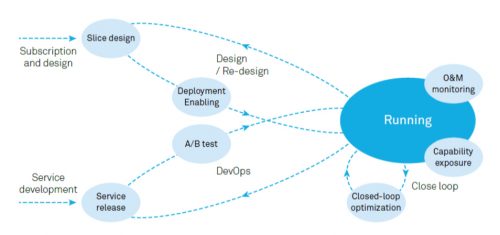
Table 2. Two types of O&M modes for 5G network slices on the smart grid
For operators, the fault, configuration, accounting, performance, security (FCAPS) capabilities are required so that operators’ O&M personnel can improve both overall service capability and network efficiency. For tenants, a simple and easy-to-use O&M GUI is required to help tenants achieve the fastest speed, the most natural experience, and value through both networks and applications.
Closed-Loop Optimization of Smart Grid Slices
To achieve optimal user experience and maximum network resource efficiency in a complex network environment, closed-loop optimization of slices must be implemented. Closed-loop management means monitoring the network and service status. When a target deviation occurs, the network and services are adjusted to ensure the expected performance levels. Closed-loop optimization of network slices is classified into two types.

Table 3. Two closed-loop optimization modes of 5G network slices on the smart grid
Local closed-loop and remote closed-loop are combined to ensure real-time service assurance and overall network efficiency improvement. Local closed-loop is implemented by presetting policies and adjusting logic on the control plane and user plane. When the service capability reaches the threshold and will be or has been damaged, the network deployment and network parameters can be quickly adjusted to improve user experience of current and subsequent services. For example, for a smart grid slice, when a new power device is deployed in a region or a new distributed power supply is connected to the network, the network can automatically scale in or out the function nodes in the edge area and deploy the power grid load adjustment function locally to improve the SLA assurance capability of the region. In remote closed-loop, the system collects and analyzes long-term network operator data, searches for regularities, obtains optimization directions, and automatically adjusts networks periodically or triggers network redesign to improve network service capabilities.
Slice Capability Exposure on the Smart Grid
Slice capability exposure is a key means to achieve the combination of applications and networks to enable network capabilities to be easily applied to the electric power industry. The detailed requirements are as follows:
- Network capability orchestration: Based on the service-oriented concept, network capabilities are atomized. Each atomic capability can become a part of the industry service process and can be flexibly assembled according to different user requirements.
- Flexible network capability exposure: The network exposure function (NEF) provides secure and manageable open capabilities, including services and data, for the electric power industry. The power industry can invoke the RESTful interface to obtain certain types of user parameters and service parameters as required.
- Application integration: In addition to network capability exposure to the electric power industry, certain applications can be integrated to the networks based on the requirements of the electric power industry. The electric power industry provides a certain type of atomic network service capability (such as security) to become a part of end user service processes.
3. Practices of 5G power slicing
In April 2019, China Telecom Jiangsu, State Grid Corporation of China (SGCC) Nanjing Power Supply Company, and Huawei completed the world’s first electricity slice to comply with the latest 5G SA specifications released by 3GPP. This is also the industry’s first electricity network slice test under a real power grid environment in Nanjing. The success of this test marks a milestone in an in-depth exploration of 5G vertical industry applications.
The SA electricity slice fully utilizes the millisecond-level latency advantage on 5G networks and SLA assurance of network slicing. It enhances bidirectional communication between power grids and end-users and ensures precise management of small power units on power grid terminals of overloaded power grids. These advantages help minimize the economic and social impact caused by power outages.

Figure 9. Test network for the electricity slice
Huawei teamed up with China Telecom Nanjing and SGCC Nanjing to use electric terminals for end-to-end field tests on the 5G SA electricity slice. After deploying 5G base stations in the Drum- Tower Square and Lishui District, China Telecom Nanjing performed indoor and outdoor local-end, mid-end, remote-end, and obstacle blocking tests. An approximately 35ms end-to-end latency, which may fluctuate slightly from time to time, was identified in the processes of power server processing, network instruction transmission, and load control terminal processing. Slice isolation was also fully verified. The slice was proven to meet mission-critical requirements for millisecond- level precise management of load processing units running on telecom networks.
4. Additional Technical Achievements
1. June 2019, China Telecom, SGCC and Huawei released the industry’s first commercial feasibility analysis report on 5G power slicing.
It proves that 5G power slicing can realise smart grid at lower cost and benefit operators. Based on the analysis of live network sampling data, the report provides quantitative TCO and ROI evaluation:
- 5G power slicing will help power grid enterprises significantly reduce TCO (by 86%) of power-communication-networks (from 2022 to 2030)
- 5G power slicing has a good ROI for operators (investments will be recovered in 5years, from 2022 to 2026; ROI will reach 54% in 2030)
2. January 2018, China Telecom, SGCC and Huawei released the technical feasibility analysis report on 5G power slicing.
3. 18 power requirement proposals have been submitted to 3GPP, 9 of them have been accepted; 10 patents regarding 5G smart grid were applied.
5. Ecosystem of 5G Power Slicing
The projects involve end-to-end industry partners in the power industry jointly promoting the development of 5G smart grid. Partners include power industry enterprises (SGCC and CSG), power terminal and application enterprises (NARI, SiFang, and Jiangsu FangTian), and industry research institutes (Global Energy Internet Research Institute and Electric Power Research Institute of Jiangsu).
By leveraging industry organisations such as 5GSA, 5GACIA, IMT2020 (5G), CRGE, the projects have successfully brought an important consensus to the industry that Network Slicing and MEC are key technologies for the success of 5G smart grid. The whole industry should increase the emphasis and investment in the two technologies.
Conclusion
As a typical example of the vertical industry, smart grid poses new challenges to communications networks. The diversity of power grid services requires a flexible and orchestrated network, high reliability requires isolated networks, and millisecond-level ultra-low latency requires networks with optimal capabilities. 5G network slicing can address and meet all these diversified network connection requirements from different vertical industries.
The 5G smart grid innovation project has been proven as a valuable reference for the cooperation among global operators and enterprises in the 5G era.
Powered by SA: Smart Grid 5G Network Slicing – SGCC, China Telecom and Huawei
